
Gonaïves: The Cradle of Haitian Independence
Discover Gonaïves, the birthplace of Haitian independence, a city rich in history, culture, and natural beauty. Explore its vibrant markets, stunning beaches, and historical landmarks.
Gonaïves, a city rich in history and culture, is often referred to as the cradle of Haitian independence. It was here in 1804 that Jean-Jacques Dessalines declared Haiti's independence from France, making it the first black-led republic in the world. The city's historical significance is palpable, and visitors can explore numerous monuments and sites that commemorate this pivotal moment in history. Gonaïves is not just about history; it is also a vibrant city with a lively local culture. The bustling markets offer a glimpse into the daily lives of its residents, with colorful displays of fruits, vegetables, and handcrafted goods. The city's cuisine is a delightful experience, with local dishes such as griot (fried pork) and diri ak djon djon (black mushroom rice) providing a taste of authentic Haitian flavors. Nature lovers will find Gonaïves equally appealing. The city's proximity to the coast means that beautiful beaches are just a short drive away. Bassin Bleu, a stunning natural pool, is a popular spot for swimming and picnicking. For those interested in exploring further, the nearby mountains offer hiking trails with breathtaking views of the surrounding landscape.
Local tips in Gonaïves
- Visit the Musée du Panthéon National Haïtien to learn about Haiti's journey to independence.
- Try local dishes at street food stalls for an authentic culinary experience.
- Bring cash as credit cards are not widely accepted in most places.
- Hire a local guide for a more in-depth understanding of the city's history.
- Plan a trip to Bassin Bleu for a refreshing natural retreat.
- Respect local customs and traditions to ensure a pleasant experience.
Gonaïves: The Cradle of Haitian Independence
Gonaïves, a city rich in history and culture, is often referred to as the cradle of Haitian independence. It was here in 1804 that Jean-Jacques Dessalines declared Haiti's independence from France, making it the first black-led republic in the world. The city's historical significance is palpable, and visitors can explore numerous monuments and sites that commemorate this pivotal moment in history. Gonaïves is not just about history; it is also a vibrant city with a lively local culture. The bustling markets offer a glimpse into the daily lives of its residents, with colorful displays of fruits, vegetables, and handcrafted goods. The city's cuisine is a delightful experience, with local dishes such as griot (fried pork) and diri ak djon djon (black mushroom rice) providing a taste of authentic Haitian flavors. Nature lovers will find Gonaïves equally appealing. The city's proximity to the coast means that beautiful beaches are just a short drive away. Bassin Bleu, a stunning natural pool, is a popular spot for swimming and picnicking. For those interested in exploring further, the nearby mountains offer hiking trails with breathtaking views of the surrounding landscape.
When is the best time to go to Gonaïves?
Iconic landmarks you can’t miss
Place Pétion
Discover the ultimate amusement experience at Place Pétion in Les Gonaïves, Haiti, where fun and adventure await for everyone.

Auberge Fitz
Experience the charm of Gonaïves at Auberge Fitz, where cozy accommodations and authentic Haitian cuisine await your arrival.

Odivin hotel luxury suite
Unwind in elegance at Odivin Hotel Luxury Suite in Gonaïves, where modern comfort meets Haitian hospitality for an unforgettable experience.

French Alliance of Gonaives
Discover the cultural heartbeat of Gonaives at the French Alliance, where art, language, and heritage merge to create an unforgettable experience.

Place d'Armes de la Ville des Gonaïves
Discover the vibrant atmosphere of Place d'Armes de la Ville des Gonaïves, a must-visit amusement center for an authentic taste of Haitian culture.
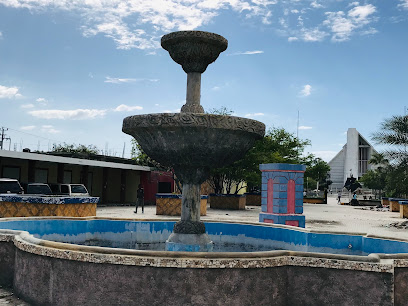
Haïti gonaïves
Discover the vibrant flavors of Haitian cuisine at Haïti Gonaïves, a delightful oyster bar in the heart of Gonaïves, perfect for seafood lovers.

Cathédrale Du Souvenir
Explore the breathtaking beauty and spiritual significance of Cathédrale Du Souvenir in Gonaïves, a must-visit for those seeking cultural immersion.

Place Bouteille
Discover the joy and excitement of Place Bouteille, Gonaïves' premier amusement center offering thrilling activities and local culinary delights.

Gonaïves-Haiti
Explore Gonaïves, Haiti – a historical coastal gem with rich culture, beautiful beaches, and warm hospitality waiting for you.

memorial de l'independance
Explore the Memorial de l'Indépendance in Gonaïves, a poignant museum celebrating Haiti's rich history and struggle for freedom.

Cimetière des Gonaïves
Explore the cultural significance of Cimetiere des Gonaïves, a serene cemetery reflecting the rich heritage and artistry of Haitian traditions.

Eglise de Dieu Union Chrétienne
Discover the spiritual heart of Les Gonaïves at Eglise de Dieu Union Chrétienne, a beautiful Christian church steeped in local culture and tradition.

Madan Kolo
Discover Madan Kolo, an exquisite sculpture in Gonaïves that captures the essence of Haitian art and culture in a vibrant coastal setting.

Haiti
Experience Haiti's breathtaking landscapes, rich culture, and historical significance, perfect for adventurers and culture enthusiasts alike.

Frente a la iglesia gonaives
Discover the serene beauty and cultural significance of Iglesia de Gonaïves, a must-visit destination in the heart of Haiti.
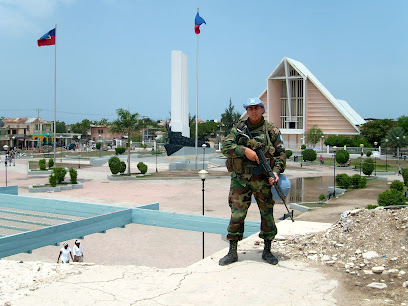
Unmissable attractions to see
Laferriere Citadel
Discover the Laferriere Citadel, a UNESCO World Heritage site, and delve into Haiti's rich history and breathtaking landscapes.

Heroes Monument of Vertières
Explore the Heroes Monument of Vertières in Cap-Haitien: a historic memorial park celebrating Haiti's spirit of independence and resilience.
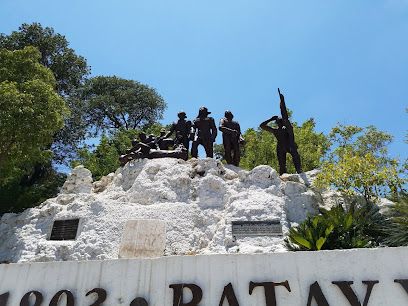
Musée Ogier-Fombrun
Explore the rich history of Haiti at Musée Ogier-Fombrun, a local history museum that showcases the country’s cultural heritage through captivating artifacts.

Place Pétion
Experience the thrill and excitement at Place Pétion, a vibrant amusement center in Les Gonaïves, where fun awaits for all ages.

Place d'Armes de la Ville des Gonaïves
Experience the vibrant culture and lively atmosphere of Place d'Armes de la Ville des Gonaïves, the heart of community life in Haiti.

Place Bouteille
Experience the joy and vibrancy of Place Bouteille, an amusement center in Gonaïves that showcases the heart of Haitian culture and entertainment.

Fort Picolet
Explore Fort Picolet, a captivating historical landmark in Cap-Haïtien offering stunning ocean views and a glimpse into Haiti's rich past.

Jean-Jacques Dessalines Statue
Explore the Jean-Jacques Dessalines Statue in Cap-Haitien, a tribute to Haiti's independence and a vibrant cultural hub.

memorial de l'independance
Discover the rich history of Haiti at the Memorial de l'Indépendance in Gonaïves, a powerful homage to the nation's journey to freedom.

La Source
Discover the thrill and joy of La Source, an amusement park in Saint-Michel-de-l'Atalaye, perfect for family fun and cultural experiences.

Toussaint Louverture statue
Discover the Toussaint Louverture Statue in Ennery, Haiti – a powerful tribute to freedom and resilience in the heart of the Caribbean.

Saint Juste
Explore Saint Juste in Gonaïves, a serene religious destination that embodies the spirit and culture of Haiti, perfect for reflection and discovery.

Essential places to dine
Celeste Bar-Resto Club
Discover the heart of Haitian cuisine at Celeste Bar-Resto Club – where food meets culture in Gonaïves.

Coin D'Or Fast Food
Discover authentic Haitian cuisine at Coin D'Or Fast Food in Gonaïves – where every bite tells a flavorful story.

Le Bigot Restaurant Bar Et Grill
Discover authentic Haitian flavors at Le Bigot Restaurant Bar Et Grill in Les Gonaïves - where culinary tradition meets vibrant dining.

Paradis village
Experience authentic Haitian cuisine at Paradis Village in Gonaïves – a delightful blend of local flavors and international dishes awaits!
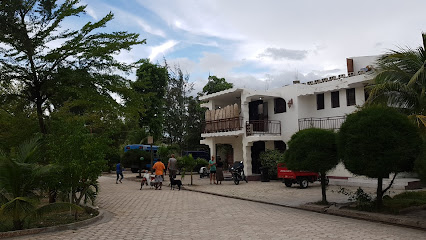
Haïti gonaïves
Experience the best of Haitian cuisine at Gonaïves Oyster Bar - Fresh oysters, stunning sea views, and vibrant local culture await!

Carlomina Bar
Discover authentic Haitian cuisine and vibrant nightlife at Carlovina Bar in Gonaïves – where every meal tells a story.
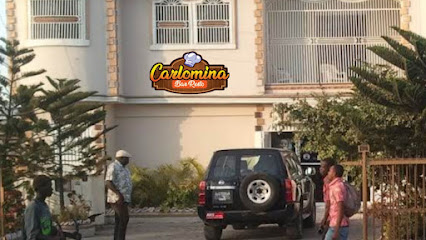
Le Domaine Night Club et Restaurant
Experience vibrant dining and nightlife at Le Domaine Night Club et Restaurant in Gonaïves - where local flavors meet lively entertainment.

Amisio Restaurant
Experience authentic Haitian cuisine at Amisio Restaurant in Gonaïves; savor the flavors of Haiti in a warm and inviting atmosphere.

Mai Kai
Experience authentic Haitian cuisine at Mai Kai in Gonaïves – a must-visit destination for food lovers exploring Haiti.

Fin Gourmet
Discover authentic Haitian cuisine at Fin Gourmet in Les Gonaïves – where every dish tells a story.

Kafe Lakay
Discover authentic Haitian cuisine at Kafe Lakay in Gonaïves, where every dish tells a story and every meal is a celebration.

Wooby Bens
Experience authentic Haitian cuisine at Wooby Bens in Gonaïves—where every dish tells a story.

FAO
Experience authentic Haitian flavors at FAO in Les Gonaïves—where local cuisine meets warm hospitality.
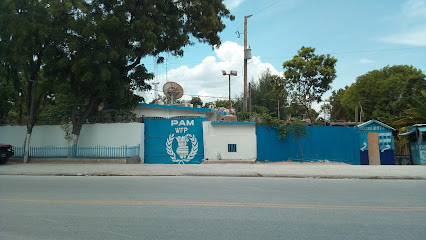
Joy Bar Resto
Experience the authentic flavors of Haiti at Joy Bar Resto in Gonaïves – where local cuisine meets delightful ambiance.

Idéal Bar Restaurant
Experience authentic Haitian cuisine at Idéal Bar Restaurant in Gonaïves – where every dish tells a story.

Markets, malls and hidden boutiques
Place Pétion
Experience the vibrant thrills and family-friendly fun at Place Pétion, Gonaïves' premier amusement center, ideal for unforgettable adventures.

Place d'Armes de la Ville des Gonaïves
Experience the lively atmosphere of Place d'Armes de la Ville des Gonaïves, a cultural hub brimming with local flavors, music, and community spirit.

Place Bouteille
Experience the joy and thrills at Place Bouteille, Gonaïves' top amusement center featuring rides, games, and local flavors for an unforgettable day.

Market Place Gonaives
Discover the essence of Haitian culture at Market Place Gonaives, where local flavors and vibrant shopping experiences come together.

Mose's Matériaux de construction
Explore local craftsmanship and building materials at Mose's Matériaux de construction in Les Gonaïves, a hub for construction supplies in Haiti.

BBC MOBILE UNLOCK
Discover the latest in mobile technology and accessories at BBC MOBILE UNLOCK in Gonaïves, your go-to electronics store for tech-savvy travelers.

Univers Papétrie
Explore Univers Papétrie in Gonaïves for unique handmade paper products and stationery that reflect the beauty of Haitian creativity.

DOXA LIBRAIRIE PAPETERIE
Explore the literary treasures of Haiti at DOXA LIBRAIRIE PAPETERIE, a charming bookstore in Les Gonaïves offering a vast selection of local and international literature.

Markens Techology Center
Discover cutting-edge technology and innovative biotech solutions at Markens Technology Center in Les Gonaïves, Haiti.
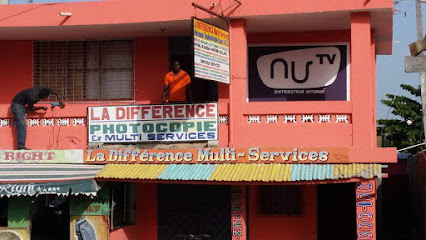
Le BON Patisserie
Discover the exquisite flavors of Haiti at Le BON Patisserie, where every pastry is a delightful experience waiting to be savored.

Ô Doux Jésus Auto Parts
Explore the unique blend of automotive supplies and local culture at Ô Doux Jésus Auto Parts in Gonaïves, Haiti.

Lama Tissus
Discover vibrant textiles and authentic Haitian fabrics at Lama Tissus in Les Gonaïves, a paradise for fabric lovers.

Debit room
Experience the warmth of Haitian culture at Debit Room, a cultural haven in Les Gonaïves offering unique local goods and friendly service.

Rielle Esperans
Explore the vibrant flavors of Gonaïves at Rielle Esperans, your go-to grocery store for local delights and fresh produce.

ProGame Center & Unlock Pro
Explore the vibrant world of electronics at ProGame Center & Unlock Pro in Gonaïves — a must-visit for tech lovers and gamers.

Essential bars & hidden hideouts
Ekla Bar
Discover the lively spirit of Ekla Bar in Les Gonaïves, where local culture meets vibrant nightlife and refreshing cocktails await.

D Will Sport Bar & Guest House
Experience the vibrant atmosphere at D Will Sport Bar & Guest House in Gonaïves, where local culture, delicious drinks, and warm hospitality meet.

Cassandra Bar et Hotel
Discover the vibrant nightlife of Gonaïves at Cassandra Bar et Hotel, where local flavors and warm hospitality await every traveler.

Loisir Bar
Experience the lively nightlife of Gonaïves at Loisir Bar, where refreshing drinks and vibrant atmosphere await every visitor.

Joram Bar
Discover the vibrant local culture at Joram Bar in Gonaïves, where affordable drinks and a friendly atmosphere await every traveler.

Zaco bar
Experience the vibrant nightlife at Zaco Bar in Gonaïves, where local culture meets refreshing drinks in a laid-back atmosphere.

Sivie Bar
Experience the local nightlife at Sivie Bar in Gonaïves, where vibrant culture meets refreshing drinks and friendly faces.

The Green
Experience the vibrant atmosphere of The Green in Gonaïves, where refreshing drinks and local culture create unforgettable moments.

Le Tout Puissant Bar
Discover the heart of Gonaïves at Le Tout Puissant Bar, where vibrant culture meets unforgettable nightlife experiences.

TRIUMPH BAR RESTO
Discover the lively atmosphere of Triumph Bar Resto in Gonaïves, where refreshing drinks and local culture come together for an unforgettable experience.

OMEGA BAR AND STORE
Discover Omega Bar and Store in Gonaïves, a vibrant spot for tourists to enjoy refreshing drinks and immerse themselves in local culture.

APALI Bar-Resto
Discover the vibrant essence of Gonaïves at APALI Bar-Resto, where local flavors and lively ambiance come together for an unforgettable experience.

Amitié Bar-Resto
Experience the vibrant local culture at Amitié Bar-Resto, where delicious Haitian cuisine meets a lively bar atmosphere in Les Gonaïves.

Valass Street Bar
Discover the vibrant spirit of Gonaïves at Valass Street Bar, your go-to destination for local and international beers in a lively atmosphere.

J-S Bar Resto & Multi-Service
Experience the vibrant flavors and warm hospitality of J-S Bar Resto & Multi-Service in Les Gonaïves, where local culture meets delicious cuisine.

Local Phrases
-
- HelloBonjou
[bon-zho] - GoodbyeOrevwa
[oh-rev-wah] - YesWi
[wee] - NoNon
[nohn] - Please/You're welcomeTanpri
[tahn-pree] - Thank youMèsi
[meh-see] - Excuse me/SorryEskize mwen
[es-kee-zay mwen] - How are you?Kijan ou ye?
[kee-jahn oo yay] - Fine. And you?Byen. E ou?
[byen. ay oo] - Do you speak English?Eske ou pale angle?
[es-kay oo pal an-glay] - I don't understandMwen pa konprann
[mwen pah kohn-prahn]
- HelloBonjou
-
- I'd like to see the menu, pleaseMwen ta renmen wè meni an, tanpri
[mwen tah rahn-men weh meh-nee ahn tahn-pree] - I don't eat meatMwen pa manje vyann
[mwen pah mahn-jay vee-ahn] - Cheers!Santé!
[san-tay] - I would like to pay, pleaseMwen ta renmen peye, tanpri
[mwen tah rahn-men pay-yay tahn-pree]
- I'd like to see the menu, pleaseMwen ta renmen wè meni an, tanpri
-
- Help!Sekou!
[seh-koo] - Go away!Ale!
[ah-lay] - Call the Police!Rele Polis la!
[re-lay poh-lees lah] - Call a doctor!Rele yon doktè!
[re-lay yohn dohk-tay] - I'm lostMwen pèdi mwen
[mwen pay-dee mwen] - I'm illMwen malad
[mwen mah-lahd]
- Help!Sekou!
-
- I'd like to buy...Mwen ta renmen achte...
[mwen tah rahn-men asht] - I'm just lookingMwen jis ap gade
[mwen zhees ahp gah-day] - How much is it?Konbyen li ye?
[kohn-byen lee yay] - That's too expensiveSa tro chè
[sah troh chay] - Can you lower the price?Eske ou ka ba pri a?
[es-kay oo kah bah pree ah]
- I'd like to buy...Mwen ta renmen achte...
-
- What time is it?Kisa lè li ye?
[keesah lay lee yay] - It's one o'clockLi senkè
[lee sahn-kay] - Half past (10)Demi pase dis
[deh-mee pah-say dees] - MorningMaten
[mah-ten] - AfternoonApremidi
[ah-prem-dee] - EveningAswè
[ah-sway] - YesterdayYe
[yay] - TodayJodi a
[zho-dee ah] - TomorrowDemen
[deh-men] - 11
[1] - 22
[2] - 33
[3] - 44
[4] - 55
[5] - 66
[6] - 77
[7] - 88
[8] - 99
[9] - 1010
[10]
- What time is it?Kisa lè li ye?
-
- Where's a/the...?Ki kote yon/l... ye?
[kee koh-tay yohn/ell yay] - What's the address?Kisa adrès la ye?
[keesah ah-drehs lah yay] - Can you show me (on the map)?Eske ou ka montre mwen (sou kat la)?
[es-kay oo kah mohn-tray mwen (soo kaht lah)] - When's the next (bus)?Kilè pwochen (bis la)?
[kee-lay pwosh-enn (bees lah)] - A ticket (to ....)Yon tikè (pou ....)
[yohn tee-kay (poo ....)]
- Where's a/the...?Ki kote yon/l... ye?
History of Gonaïves
-
On January 1, 1804, Gonaïves became the cradle of Haitian independence. It was here that Jean-Jacques Dessalines declared Haiti's independence from French colonial rule, making it the first independent black republic and the second nation in the Western Hemisphere to gain independence after the United States. The Proclamation of Independence was read at the Place d'Armes, now known as the Place de la Révolution.
-
Jean-Jacques Dessalines, one of the most prominent figures in Haitian history, is intimately linked with Gonaïves. After leading the final battle against the French in Vertières, Dessalines chose Gonaïves to announce the end of colonial rule. His leadership and vision were crucial to the establishment of Haiti as a free nation, and he is celebrated as a national hero.
-
Fort Desaix is a historical military fort located just outside of Gonaïves. Constructed by the French in the late 18th century, it played a significant role during the Haitian Revolution. The fort is an architectural marvel of its time, offering visitors a glimpse into the military strategies and colonial history of the era.
-
La Maison de 1804, also known as the Independence House, is a museum dedicated to the events surrounding Haiti's declaration of independence. The house, which once served as the headquarters for Jean-Jacques Dessalines, displays artifacts, documents, and exhibitions that delve into the struggle for freedom and the birth of the Haitian nation.
-
Gonaïves is a significant center for Vodou, a syncretic religion that blends African spiritual practices with Catholicism. Vodou ceremonies, featuring drumming, dancing, and spirit possession, are an integral part of the cultural fabric of Gonaïves. The city is home to several important Vodou sites, including temples and sacred spaces where rituals are performed.
-
The Gonaïves Carnival, also known as 'Kanaval,' is one of the most vibrant and culturally rich events in Haiti. Held annually, this festival showcases traditional music, dance, and elaborate costumes. It is a celebration of Haitian culture and resilience, drawing participants and spectators from across the country.
-
Gonaïves has historically been an important center for salt production in Haiti. The city's salt flats, known as 'salines,' have been harvested for centuries. This industry provides a significant source of livelihood for many residents and is a key component of the local economy. Visitors can tour the salt flats to learn about traditional salt harvesting techniques.
-
The Cathedral of St. Charles Borromeo is a prominent religious and historical landmark in Gonaïves. Built in the late 19th century, the cathedral is an architectural gem that reflects the city's colonial past. It serves as a spiritual center for the community and a place of worship for Catholics in the region.
Gonaïves Essentials
-
Gonaïves is located in the Artibonite Department of Haiti. The nearest international airport is Toussaint Louverture International Airport in Port-au-Prince, approximately 150 kilometers away. From Port-au-Prince, you can take a bus service such as Transport Chic or Transport Leconte to Gonaïves, which typically takes around 3 to 4 hours by road. Alternatively, you can hire a private taxi for a more comfortable and faster journey.
-
In Gonaïves, local transportation options include taxis, motorcycle taxis (moto-taxis), and tap-taps (shared minibuses). Taxis are relatively inexpensive and can be found throughout the city. Moto-taxis are a quick and economical way to navigate through traffic. For trips within the city, tap-taps are the most common and affordable option. Renting a car is also possible, but be prepared for local driving conditions, which can be challenging.
-
The official currency in Haiti is the Haitian Gourde (HTG). US Dollars are also widely accepted, especially in larger establishments. Credit cards are accepted in some hotels, restaurants, and shops, but it is advisable to carry cash, particularly for smaller purchases and in rural areas. ATMs are available in Gonaïves, but it is recommended to withdraw sufficient funds from major cities like Port-au-Prince before traveling.
-
Gonaïves is generally safe for tourists, but it is important to take standard precautions. Some areas and neighborhoods in the city have higher crime rates, particularly for crimes targeting tourists. Avoid walking alone at night, especially in isolated areas. It’s best to stay in well-lit and populated areas. Always keep an eye on your belongings and be cautious of pickpockets in crowded places. Areas like Raboto and Descahos are known for higher crime rates, so it’s best to avoid these neighborhoods.
-
In case of an emergency, dial 114 for police assistance and 116 for medical emergencies. The local hospital, Hôpital La Providence, provides medical services. It is highly recommended to have travel insurance that covers medical emergencies. For minor health issues, pharmacies are available in the city where you can purchase over-the-counter medications. Familiarize yourself with the location of your country's embassy or consulate in Haiti for additional support.
-
Fashion: Do dress modestly, especially when visiting religious sites. Avoid wearing revealing clothing. Religion: Do respect local customs and traditions. Always dress modestly and behave respectfully in religious settings. Public Transport: Do be respectful and give up your seat to elderly passengers. Don’t eat or drink on public transport. Greetings: Do greet people with a handshake or a friendly nod. A polite greeting in French or Creole is appreciated. Eating & Drinking: Do try local dishes and accept food offerings graciously. Don’t refuse hospitality, as it can be considered impolite.
-
To experience Gonaïves like a local, visit the local markets such as Marché en Fer, where you can buy fresh produce and traditional Haitian goods. Engage with locals, who are often friendly and willing to share stories about the city's history and culture. Don’t miss visiting historic sites like the Fort of the Young and the Cathedral of Gonaïves. For a unique experience, take a stroll along the Boulevard des Trois Dumas, which offers picturesque views and a chance to observe daily life in the city.
Trending Landmark in Gonaïves
-
Place Pétion
-
Auberge Fitz
-
Odivin hotel luxury suite
-
French Alliance of Gonaives
-
Place d'Armes de la Ville des Gonaïves
-
Haïti gonaïves
-
Cathédrale Du Souvenir
-
Place Bouteille
-
Gonaïves-Haiti
-
memorial de l'independance
-
Cimetière des Gonaïves
-
Eglise de Dieu Union Chrétienne
-
Madan Kolo
-
Haiti
-
Frente a la iglesia gonaives
Nearby Cities to Gonaïves
-
Things To Do in Saint-Marc
-
Things To Do in Cap-Haïtien
-
Things To Do in Hinche
-
Things To Do in Port-au-Prince
-
Things To Do in Petionville
-
Things To Do in Jacmel
-
Things To Do in Jérémie
-
Things To Do in Les Cayes
-
Things To Do in Puerto Plata
-
Things To Do in Jarabacoa
-
Things To Do in South Caicos
-
Things To Do in Salt Cay
-
Things To Do in Providenciales
-
Things To Do in Grace Bay
-
Things To Do in Middle Caicos




